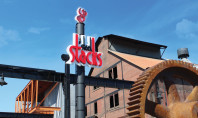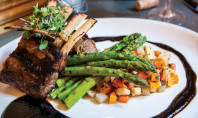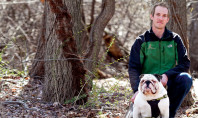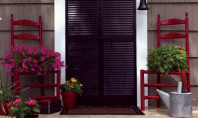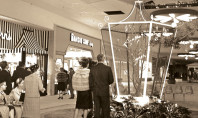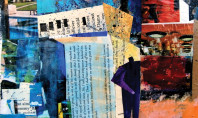The Great Thaw and the Law: 5 Legal Issues to Watch Out for this Spring
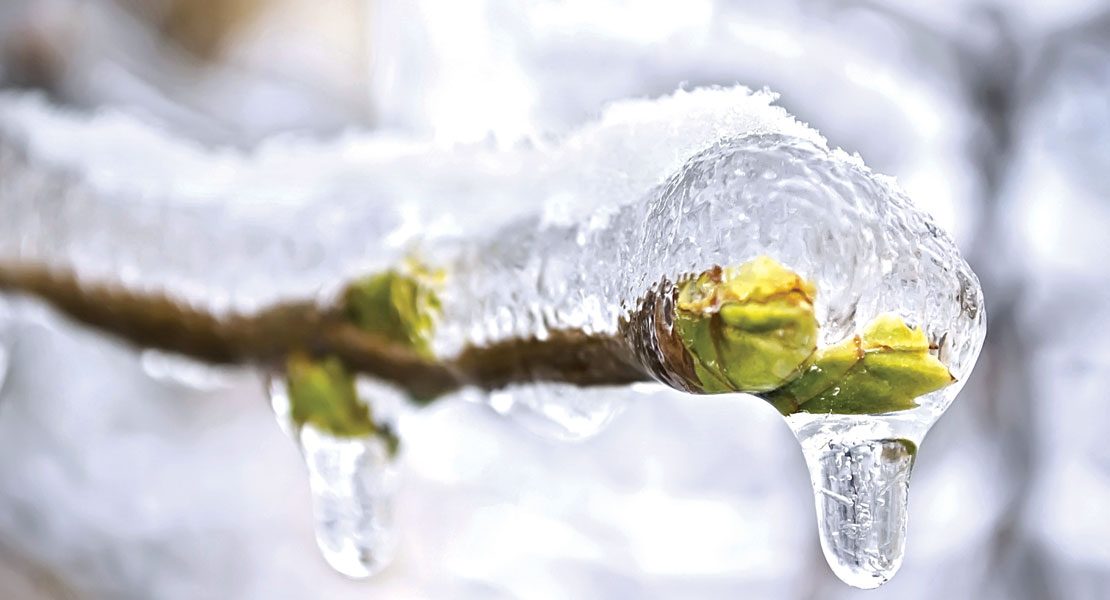
By Gretchen L. Geisser
The winter of 2013 to 2014 reared its ugly head with talk of snow, ice and, of course, the polar vortex. While most of us can say we emerged from winter relatively unscathed, I fear the same cannot be said for our roadways, now potholed and cracked through and through. The snow and ice have finally disappeared, the ground has officially thawed, and we now have an opportunity to fully appreciate the havoc that this frosty winter has wreaked upon our homes and properties. So now, as you begin the process of beautifying your home and garden, here are five legal issues to watch out for this spring.
Adverse Possession
Either from the fury of the relentless ice causing tree limbs to snap or some other equally damaging component of winter, many of our fences have been damaged or completely destroyed, forcing property owners to install a new fence. While initially one might think the location of a fence need only be an approximation, such a guessing game can lead to serious legal implications, either by causing a potential gain or loss of property through adverse possession. Adverse possession is a legal doctrine which permits a person to achieve ownership of another person’s property by operation of law. In order to obtain ownership of the property, the person attempting to obtain ownership must prove actual, continuous, exclusive, visible, notorious, distinct and hostile possession of the land for twenty-one years. For those property owners holding their breaths, rest assured that these requirements must be proven by clear evidence. However, a potential issue may arise if a fence is on your neighbors’ property or inside your own property line, giving the effect that this fence represents the true property line. While I am one-hundred percent in favor of being a kind neighbor (I myself had the privilege of growing up next to the best neighbors a person could have), be sure that all neighbors understand exactly where the property line exists so that a dispute does not arise in the future.
The snow and ice have finally disappeared, the ground has officially thawed, and we now have an opportunity to fully appreciate the havoc that this frosty winter has wreaked upon our homes and properties.
Trespass
When hearing the word trespass regarding property rights, people often picture those big ominous red and black signs saying “Keep Out” or “No Trespassing.” While following those signs seems easy enough, the legal principle of trespassing extends to much more than not walking on someone’s property. Trespass is generally described as an unlawful act committed against the person or property of another. This legal principle includes trespass to land, which encompasses entering property in the possession of another, remaining on that land, or placing/throwing any object on that land. This means that all those dead branches and leaves collected from your yard, though as tempting as it may seem, cannot secretively be placed on your neighbor’s property or in the pile of branches in front of your neighbor’s house. In addition, trespass consists of continuing trespass, which is trespass in the nature of a permanent invasion on another’s rights. This means that a tree branch from your trees hanging over onto your neighbor’s property is a continuing trespass. In the event your neighbor finds this additional shade to be unwelcome, the neighbor has the absolute right to cut down any branches or roots infringing on his property, regardless of whether this trimming may cause serious damage to the tree. In the eyes of the law, an invisible wall exists from ground to sky between properties and anything breaching that wall can be removed; however, the trimming cannot extend past that invisible wall onto the offending neighbor’s property.
Nuisance
The legal principles of trespass and nuisance go hand in hand; where trespass leaves off, nuisance picks up. A nuisance is generally described as a condition, activity or situation (i.e., a nontrespassory invasion) which interferes with the use and/or enjoyment of property. In order to bring a private cause of action for nuisance, a person must demonstrate that (1) he has property rights and privileges regarding the use and enjoyment interfered with, (2) the invasion is substantial, (3) the offender’s conduct is the cause of the invasion, and (4) the invasion is either intentional and unreasonable, or unintentional but actionable as a result of negligent, reckless or ultrahazardous conduct. Nuisance is often difficult to prove due to the ‘substantial invasion’ requirement. However, depending on the strength of the fertilizer, insect repellant or pesticides used to treat that newly planted grass, such chemical treatments could rise to the level of nuisance. Other types of potential nuisances also include excessive noise, smoke, pollution and particularly foul smells.
Defective Trees
As it often does, this winter’s icy conditions have taken a toll on the trees. For a homeowner, this brings the responsibility of determining which trees have survived the winter and which have not faired so well. This has particularly important legal ramifications. A property owner, specifically in a residential or developed area, can be liable for harm caused to others or their property as a result of a fallen tree, even if that injury occurred outside of the owner’s property. However, liability will only be found if the exercise of reasonable care by the fallen tree’s owner (1) would have disclosed the defect and the risk, and (2) would have made the tree reasonably safe by repair or otherwise. This means that if a property owner knows or should have known through inspection that a defect in one of his trees poses an unreasonable danger to others, he is under a duty to remove the danger. Therefore, if you see one of your trees is rotting, dead or has a tree branch hanging over your neighbor’s roof a bit too low, you have an obligation to either trim the tree or remove the tree all together.
Sidewalk Dangers
Not only do property owners have a duty to properly maintain their trees, but also they have an obligation to keep their sidewalks in reasonably safe condition. A property owner must maintain their sidewalks in such a condition so it does not present an unreasonable risk of harm to pedestrians. While a property owner has an obligation to maintain his sidewalks in safe condition, he is not responsible for “trivial defects” in the sidewalk. As a result, a property owner most likely will not be held liable for a fall due to a slight crack, but may be responsible for a giant pothole in the sidewalk. In either event, before planting those perennials for your garden, just take a quick walk around your property to check for any unreasonable risks.
So with that in mind, here’s to you, the weeding, raking, fixing, planting, trimming, do-it-yourself weekend gardening warrior and may the flower blooming odds be ever in your favor.
Gretchen L. Geisser is an attorney in the Litigation Group of the law firm of Fitzpatrick Lentz & Bubba, P.C. Her practice includes litigation, personal injury, landlord-tenant law, and bankruptcy and creditor’s rights. She can be reached at 610.797.9000 or ggeisser@flblaw.com.

